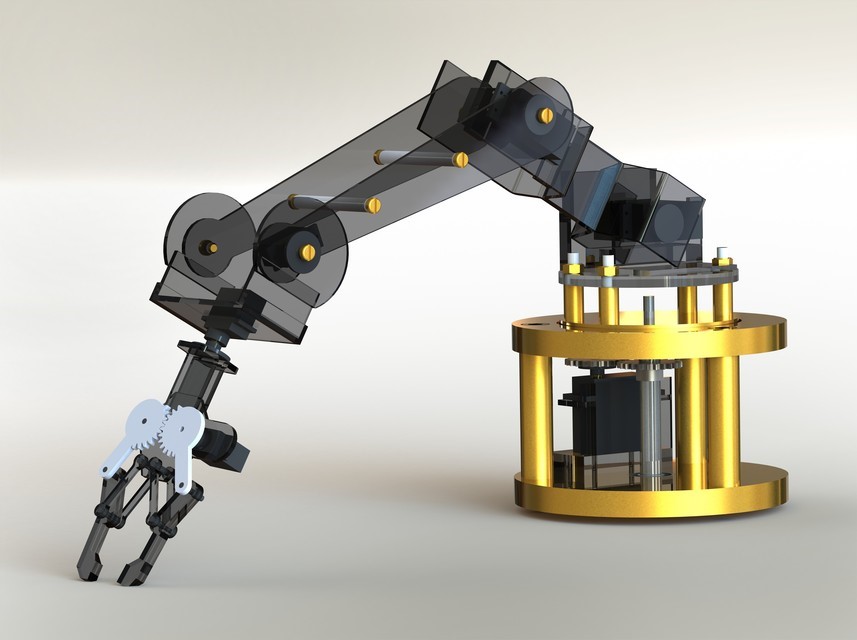
In today’s fast-paced world, companies are always looking for ways to increase their productivity and efficiency. One of the ways that businesses can achieve this is through the use of robotics. Robotic arms have been around for a long time, but advancements in materials science have allowed for the creation of carbon fiber robotic arms. Carbon fiber robotic arms are lightweight, strong, and durable, making them the ideal choice for many industries. In this article, we will explore the benefits of carbon fiber robotic arms and how they can improve productivity and efficiency.
What is a Carbon Fiber Robotic Arm?
A carbon fiber robotic arm is a type of robotic arm that is made from carbon fiber. Carbon fiber is a composite material that is made up of thin, strong fibers of carbon. The fibers are woven together and then coated with resin to create a strong and lightweight material. Carbon fiber is widely used in the aerospace, automotive, and sports industries due to its high strength-to-weight ratio.
Benefits of Carbon Fiber Robotic Arms
Lightweight: Carbon fiber robotic arms are much lighter than traditional robotic arms made from metal. This means that they can be moved more quickly and with greater precision.
Strength: Carbon fiber is stronger than steel, making it an ideal material for use in robotic arms. This strength allows for the arms to lift heavier loads and perform more tasks.
Durability: Carbon fiber is incredibly durable and resistant to wear and tear. This means that carbon fiber robotic arms will last longer than traditional robotic arms.
Reduced Vibration: Carbon fiber robotic arms have reduced vibration, which makes them more stable and accurate. This stability and accuracy are crucial in industries such as manufacturing, where precision is essential.
Cost-Effective: Although carbon fiber robotic arms are initially more expensive than traditional robotic arms, their durability and long lifespan make them a cost-effective option in the long run.
Applications of Carbon Fiber Robotic Arms
Carbon fiber robotic arms have a wide range of applications in various industries, including:
Manufacturing: Carbon fiber robotic arms are used in manufacturing to perform tasks such as welding, painting, and assembly.
Medical: Carbon fiber robotic arms are used in medical procedures such as surgeries and rehabilitation.
Aerospace: Carbon fiber robotic arms are used in the aerospace industry for tasks such as assembling spacecraft and satellites.
Agriculture: Carbon fiber robotic arms are used in agriculture for tasks such as planting and harvesting crops.
Military: Carbon fiber robotic arms are used in the military for tasks such as bomb disposal and reconnaissance.
Challenges of Carbon Fiber Robotic Arms
Although carbon fiber robotic arms offer many benefits, there are some challenges associated with their use, including:
High Cost: Carbon fiber is a more expensive material than traditional metals, which makes carbon fiber robotic arms more expensive than traditional robotic arms.
Limited Flexibility: Carbon fiber is a rigid material, which means that carbon fiber robotic arms have limited flexibility. This limits the range of motion of the arm.
Susceptibility to Damage: Carbon fiber is susceptible to damage from impact and abrasion, which means that carbon fiber robotic arms must be handled with care.
Carbon fiber robotic arms are a game-changer in many industries, offering benefits such as lightweight, strength, durability, reduced vibration, and cost-effectiveness. They have a wide range of applications in industries such as manufacturing, medical, aerospace, agriculture, and military. Although there are some challenges associated with their use, the benefits of carbon fiber robotic arms make them a valuable asset in improving productivity and efficiency.
Frequently Asked Questions (FAQs):
Are carbon fiber robotic arms safe to use?
Yes, carbon fiber robotic arms are safe to use as long as they are handled properly and operated within their specified parameters. Carbon fiber is a durable material that can withstand high stress and strain, but it is still susceptible to damage from impact and abrasion.
How do carbon fiber robotic arms improve productivity?
Carbon fiber robotic arms improve productivity by offering greater precision and accuracy, faster movement, and the ability to perform tasks that are too dangerous or difficult for humans to perform. They can also work around the clock without getting tired or needing breaks, which increases productivity and efficiency.
What industries can benefit from carbon fiber robotic arms?
Carbon fiber robotic arms have a wide range of applications in industries such as manufacturing, medical, aerospace, agriculture, and military. Any industry that requires precise, repetitive, or dangerous tasks can benefit from the use of carbon fiber robotic arms.
How long do carbon fiber robotic arms last?
Carbon fiber robotic arms have a longer lifespan than traditional robotic arms made from metal. They are resistant to wear and tear and can withstand high stress and strain, which means they can last for many years with proper care and maintenance.
Are carbon fiber robotic arms difficult to maintain?
Carbon fiber robotic arms require the same level of maintenance as traditional robotic arms. Regular cleaning, lubrication, and inspection are necessary to ensure that the arm is operating properly and to prevent any potential issues from developing. However, carbon fiber robotic arms are less susceptible to corrosion and wear and tear, which means they require less maintenance over time.




